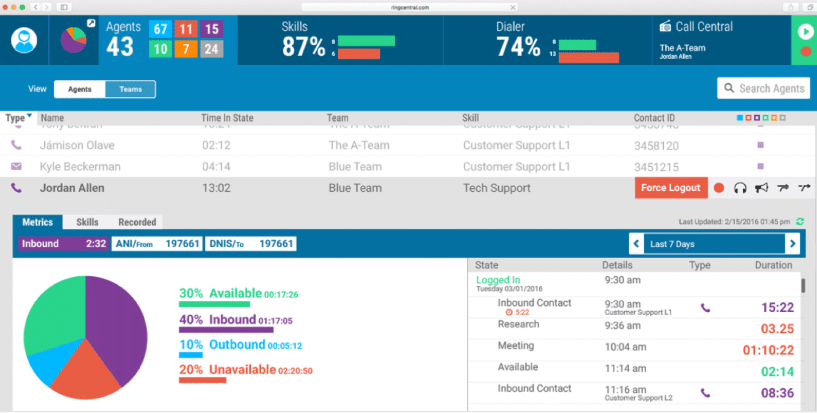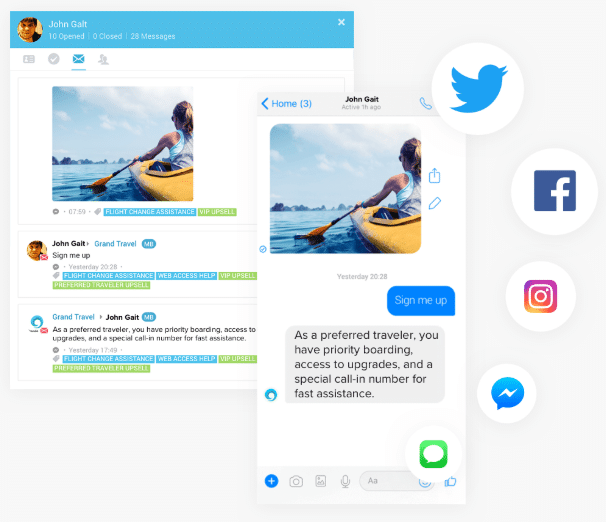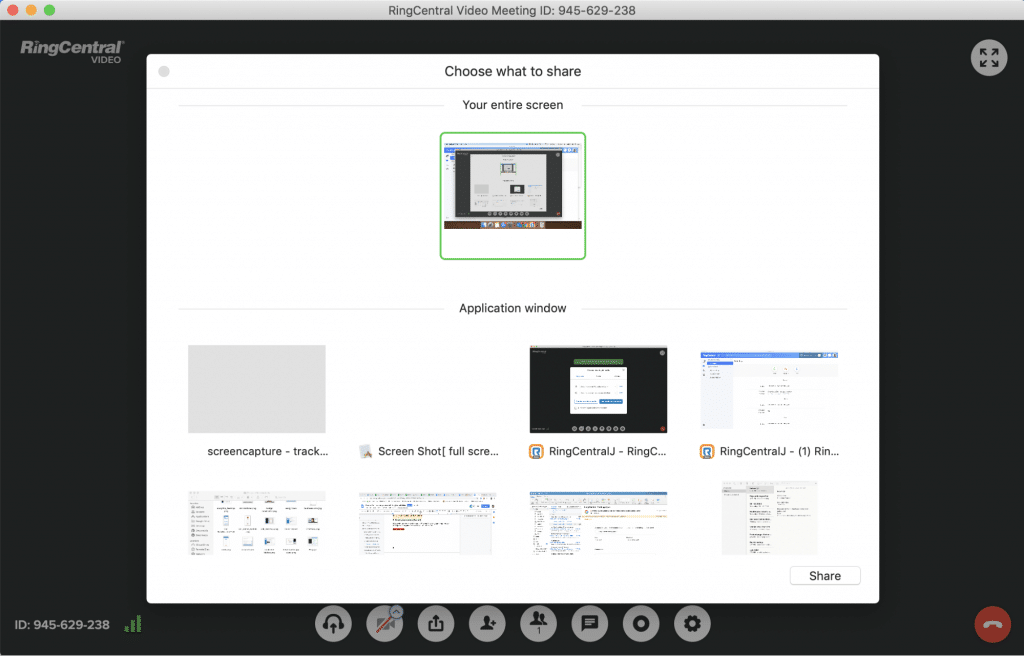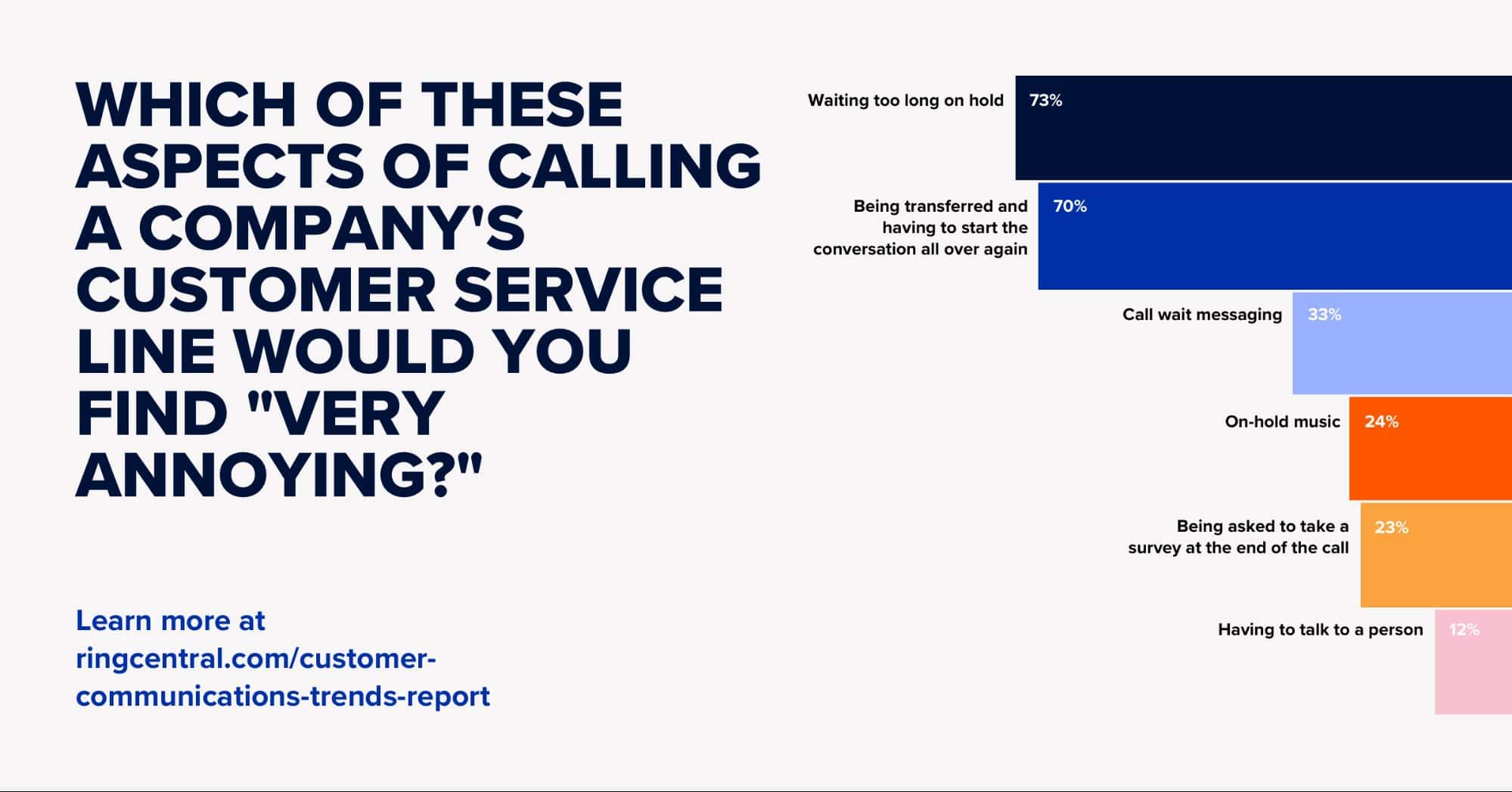No matter where you work, difficult customers come with the territory of doing business.
And they often make their presence known when you’re least expecting it. Loudly, too.
We get it. Getting chewed out or dealing with a particularly demanding customer can be draining.
Unfortunately for you, those unruly, high-stress customers aren’t just going to go away.
Rather than dread your next angry call, now’s the time to take action and learn how to deal with difficult customers once and for all.
By the end of this guide, you’ll know:
- What the most common types of difficult customers are
- 17 tips for dealing with these difficult customers
- 3 strategies for reducing the likelihood of encountering difficult customers in the future
🌟 How customer-obsessed is your business? Take this free quiz.
What are the most common types of difficult customers?
Below we’ve broken down six of the most common types of difficult customers and general strategies for dealing with them. We’ll really dig into the meat of these tips in the next section.
Recognize any of these folks?
1. Angry customers
No surprises here: plenty of customer service calls are rooted in anger and frustration. Whether or not the anger is because of your company or something else entirely is irrelevant:

How to deal with them: For starters, stay calm. Remember that their anger isn’t directed at you personally.
Also, don’t assume that their demands or anger is unreasonable. The reason for their call could be legitimately upsetting. Your priority should be to reassure them that you can help and you’re willing to hear them out. Once they realize that you’re on their side, they’re more likely to ease up.
[ebook-download title=”How customer-obsessed is your business?” link=”https://netstorage.ringcentral.com/documents/quiz_how_customer_obsessed_your_business.pdf” cta-text=”Take the quiz” src=””]
2. Entitled customers
You know the ones. They demand special treatment and think your company will die without them.
Entitled customers typically have poor attitudes and unrealistic expectations. To manage these customers, you’ll need patience and finesse.

How to deal with them: Entitled customers can be tough to please. Short of doing everything they want, the next best thing you can do is try to make them feel special. Let them know that they’re your top priority right now. Refer to them by name and thank them for both their patience and being a customer.
3. Indecisive and cautious customers
Indecisive customers might be frustrating, but they’re preferable to (and less stressful to manage then) rude ones. For example, let’s say you have a customer who can’t decide on a product or is wary about continuing their contract. If you push them too hard or don’t treat them with care, you run the risk of seeing them bounce.
How to deal with them: Your goal here should be to take the reins. For example, suggest solutions and recommend next steps rather than hope for them to draw their own conclusions. This is where “yes” or “no” questions (this is not the time for open-ended questions) can be useful. Also, reassure them of your product or service (“This is our most well-reviewed product…” or “I actually use this myself, you know!”).
4. Penny-pinching customers
Sure, everyone loves a good deal.
But some customers try to take things too far by demanding freebies or accusing you of nickel-and-diming them. Although these customers might present your price tag as make-or-break, this isn’t necessarily the case.

How to deal with them: Emphasize the benefits of your product and the good deal that they’re already getting simply by being a customer. Rather than talk about money, focus on feelings (think: security, happiness) associated with your product. Reiterate the problem your product solves rather than the price tag.
5. Talkative customers
We’d all rather have someone talk our ears off than flat-out scream at us. That said, talkative customers can have a negative impact on your average handle time—and keep you from helping other customers in your queue.

How to deal with them: Redirect the conversation wherever you have a chance to speak up (think: “Is that all I can help you with today?”) and use close-ended questions. Be polite but firm.
6. Know-it-all customers
Condescending customers who think they can do your job better than yourself might be the most frustrating of all. The good news? Dealing with them is fairly straightforward with the right attitude and mindset.
How to deal with them: Honestly, these are the situations where you just have to grin and bear it. Let them know when they’re right and thank them for being a customer. Don’t be snarky or kill ‘em with kindness, but focus on the reason for their call and ignore condescending remarks.
17 tips for dealing with difficult customers
Now, let’s talk about some strategies that apply to just about every interaction with a difficult customer.
Here are 17(!) specific tips and principles to stick to no matter which type of customer you’re dealing with.
1. Practice empathy by putting yourself in your customers’ shoes
Perhaps one of the best ways to deal with a difficult customer is to put yourself in their shoes.
Nobody wants to hop on a service call. You likewise don’t know what’s going on in their personal lives that could be upsetting them.
What if you were frustrated with a company and then got stuck on a seemingly hopeless call yourself?
Not fun.
It’s important to immediately signal to your customer that you’re going to hear them out and help them. The sooner you show empathy and your customer realizes that you aren’t just going to brush them off, the better.
Reassurance is a great way to turn difficult customers into satisfied ones. There’s a reason why empathy is one of the top customer service skills for agents to master.
Here are some examples of empathetic statements that can help reassure customers and make them feel heard:
- “You’re definitely right to get in touch. Let’s see what we can do…”
- “I understand where you’re coming from and I can definitely help…”
- “Let me make sure I’m understanding you so we can get to the bottom of this…”
2. Offer to walk them through the problem yourself
Piggybacking on the last tip, getting hands-on with your difficult customers allows you to avoid awkward conversations that go nowhere. If they’re at the point where they’re frustrated and just want to give up, they’ll be glad to let you take the reins.
With screen sharing software (or you might have screen sharing built into video conferencing software like RingCentral), you can have screen-sharing sessions to provide a super-customized level of support and walk customers through their technical issues step by step.
This speeds up the problem-solving process and shows that you’re really willing to go the extra mile on their behalf:
3. When in doubt, let them vent
Patience is a virtue in customer service.
Especially in situations where someone is clearly letting off steam, sometimes it’s best just to let it happen. Doing so might actually make them realize they’re being unreasonable once they hear themselves out loud.
It’s all a matter of perspective. If just listening to someone vent for 30 seconds means getting down to business faster and retaining that customer for the long-haul, it’s probably worth it. Right?
4. Use customer names and “you” to create a connection
To quote Dale Carnegie’s How to Win Friends and Influence People: “A person’s name is to him or her the sweetest and most important sound in any language.”
The same logic applies to difficult customers. Mentioning customers by name and frequently emphasizing “you” (rather than yourself or your company) ensures that your customer feels attended to and you are actively working to solve their problem.
This strategy is a subtle way to show someone you’re paying attention to them on a personal level. Here are some examples:
- “Alright [customer name], let me take care of this for you.”
- “Thanks for your patience [customer name], I’m looking at your account right now”
- “You’re absolutely right, [customer name]. I’d be glad to make that change for you.”
5. Never argue back
Debates are fine for politicians and lawyers, but not so much for customer support agents.
We’re not saying the customer is necessarily always right, either. However, the likelihood that you’re going to magically change an angry customer’s mind through an argument is slim to none.
So much of figuring out how to deal with irate customers is a combination of keeping calm and reframing the conversation so your customer feels like they’re being taken care of. Telling someone they’re wrong is the exact opposite of that.
6. Don’t be afraid to say “no” (but do so without actually saying “no”)
Sometimes you have to say “no,” but some agents might be convinced that they can’t actually say it to customers.
There are ways to say “no” without shutting someone down. Rather than focus on what you can’t do for your customers, try to move the conversation toward an alternative resolution. For example:
- “Let me tell you what: here’s what we can do…”
- “We don’t offer that at this time, but there are a few alternative options I can recommend…”
- “I appreciate your question and totally understand, but here’s why we don’t…”
7. Approach all of your calls with a positive attitude (even the bad ones)
This might sound cliche, but a positive attitude can transform your approach to dealing with customers.
Consider that 68% of customers1 say politeness is the key to what they perceive as “good” service.
Don’t go into a call assuming that it’s going to be a disaster. Instead, assume that you’re equipped to help and will ultimately resolve their issue by the time they hang up.
Fear and doubt are the worst enemies of an agent. By adopting a positive mindset, you might be surprised at how much more smoothly your calls go.
8. Legitimately listen to what your customers are saying
Practice active listening. It’s the practice of listening to customers to the point where you can read between the lines and restate their problems back to them in your own words. This is a more meaningful alternative to statements such as “I understand” or “I see.”
Not only does doing this make sure that you’re actually paying attention to what your customers are saying, but it also facilitates customer collaboration where the two of you can zero in on a solution together.
Here’s an example scenario:
Customer: “You know, all of these outages started after I upgraded my freakin’ plan. It’s like I’m paying more for worse service from you guys. It makes no sense.”
The customer in this case is obviously upset about frequent outages. But when we read between the lines, we can also detect that they almost feel betrayed by the fact that their service has gotten worse despite paying more money. Totally understandable.
Here’s a response using active listening that makes the customer feel in the right and likewise restates their problem:
You: “I totally hear you and I agree—that doesn’t sound right at all. Just so I’m clear, this all started two months ago when you upgraded and never prior to that. Is that correct?”
9. Don’t lie
You might be tempted at times to say something, anything, to get an irate customer off the phone.
The reality, though? Giving them false hope of a better deal or a service you don’t actually offer is only going to end in disappointment—and potentially even more anger down the road.
Be realistic with your customers in terms of what you can and can’t do for them. If their problem is ultimately out of your hands, so be it.
10. Move the conversation where it makes sense
Sometimes angry customers aren’t necessarily the result of a service problem, but rather the format in which the conversation is happening.
Some people absolutely loathe getting on the phone. On the flip side, other customers may be driven crazy by the pace of live chat or email versus a call.
Ideally, you should let your customers choose their own customer support channels to get in touch with you. (This is where omnichannel customer service comes in handy.)
11. Be conscious of your nonverbal language
Sometimes it’s what you don’t say that matters the most.
Mind how you act and react during a call through your nonverbal cues and body language. This rings true even when you’re trying to figure out how to deal with difficult customers on the phone.
You’d probably lose your cool if an agent rolled their eyes or yawned at your problems, right? Beyond simply being aware of your nonverbal language, here are some specific tips:
- Sit up straight, maintain eye contact, and don’t cross your arms when speaking in-person.
- Try to avoid sighing or taking any deep breaths.
12. Don’t automatically dump difficult customers onto someone else
Customers hate being transferred during calls.
In fact, it’s one of the most annoying things for consumers when dealing with customer service:
Yes, dealing with bad customers can suck. That said, your colleagues probably have customers who are giving them headaches as well. It’s not fair to them if you just dump your problems on them.
Unless your customer explicitly asks to be transferred or speak to someone else, they’re your responsibility.
13. Ask close-ended questions to move things along
To avoid wasting everyone’s time with unnecessary back-and-forth or explanations or talking in circles, consider using close-ended questions during tense situations to get yourself from Point A to Point B. Here are some examples:
- “[After repeating the customer’s problem back to them]…Is that correct?”
- “Based on your concerns, you want me to…Is that right?”
- “Is that the only issue I could help you with today?”
Open-ended questions are definitely ideal and more personal but sometimes can lead to tangents and opportunities for your customers’ anger to build.
14. Break their problems into smaller pieces
Sometimes you have to play the role of Sherlock Holmes to help a difficult customer who isn’t forthcoming with details.
“It just doesn’t work” or “I don’t know” are grating to hear over and over. Try to break big problems down into smaller pieces by asking close-ended questions (see above):
For example:
“You said that you never received your order. Is that correct?” → “It looks like this was the third time you’ve ordered with us. Did you have any issues with those deliveries?” → “Can you confirm your address for me?” → It appears that your most recent order was marked for your previous address.”
And so on.
This creates a sort of trail of breadcrumbs that can lead you to a solution, all the while creating little “victories” along the way as you talk to your customer.
15. Develop a thick skin
Simply put, you have to be able to mentally prepare yourself for difficult customers.
The good news is that it gets easier over time. If it helps, think of every frustrated customer as a sort of learning experience for what you can do better during your next call.
Remember: don’t take comments from difficult customers personally. Just because someone’s angry doesn’t mean they’re actually angry at you.
16. Give yourself a cut-off point for truly unreasonable customers
There are points where difficult customers can cross the line from “angry” to “unreasonable.”
Offensive, racist, or sexist remarks obviously shouldn’t be tolerated. If you reach a point where a customer is harassing you over the phone, you reserve the right to drop them.
If you’re concerned about such a call or don’t know how to react, make sure to document the situation and speak to your higher-ups. Your company should have your back.
17. Avoid as much dead air as you can
The longer you’re on the phone with an unruly customer without any sort of resolution, the tenser the situation becomes.
As a result, try to avoid dead air and awkward silence. Instead of “I don’t know” or “Hold on” or “Hmm,” actively let them know what you’re working on (even if you repeat yourself).
Don’t worry if you don’t excel at small talk or your customer isn’t interested in it. As long as you remind them that you’re on the job, you’re good.
3 strategies for reducing the likelihood of encountering difficult customers in the future
Keep in mind that many situations that result in difficult customers can actually be prevented outright.
And so the more you can do to avoid these uncomfortable situations before they happen, the better.
Below are three tactics to prioritize if you want to curb angry customers in the future.
1. Avoid keeping customers on hold
Be honest: when’s the last time you jammed out to a company’s hold music?
(The answer is “never,” right?)
Note that 75% of customers2 considered themselves “highly annoyed” when they can’t get in touch with an agent within a reasonable amount of time.
Simply by getting to your customers’ calls faster, you can keep them from souring on you.
That’s where a platform like RingCentral can be a game-changer. From monitoring your hold times to assessing the performance of your agents, our platform helps you understand what you need to do to keep customers engaged.
Additionally, our routing capabilities allow you to move customers around to available agents ASAP.

2. Make sure you’re communicating on your customers’ terms
Remember what we said earlier about customers having their preferences in terms of how they’d like to communicate with you?
Again, you should ideally be able to resolve your customers’ concerns on multiple channels for the sake of their convenience, not yours. This not only makes you more accessible, but also gives your customers a sense of control and comfort when they reach out.
Providing omnichannel support with a platform like RingCentral makes getting in touch with your business way more streamlined. Imagine: all your Twitter DMs, Facebook messages, and Instagram messages in one place, ready for you to respond without toggling between different windows:

3. Keep in touch with your customers beyond support queries
If the only time you talk with customers is when there’s something wrong, those customers are subconsciously going to think poorly of your business.
Improving relationships with your customers means having conversations that go beyond support calls. Customer surveys, check-in texts, and follow-up calls are all central to making sure that your customers are happy.
The idea here isn’t to spam people to death, but to encourage them to get in touch before their concerns ever snowball out of control.
How do you handle a difficult customer?
From angry and rude to entitled and irrational, you need to be prepared for just about anything when it comes to who’s on the other end of the phone.
Hopefully, you have a better idea of how to conquer even the most difficult of customers.
Having the right strategies in the back of your mind (and tools like RingCentral!) can be a game-changer in terms of making happy customers out of difficult ones.
1 about.americanexpress.com/press-release/wellactually-americans-say-customer-service-better-ever
2 icmi.com/resources/2017/what-do-customers-really-think-about-long-wait-times
Originally published Apr 01, 2020, updated Jun 17, 2022






